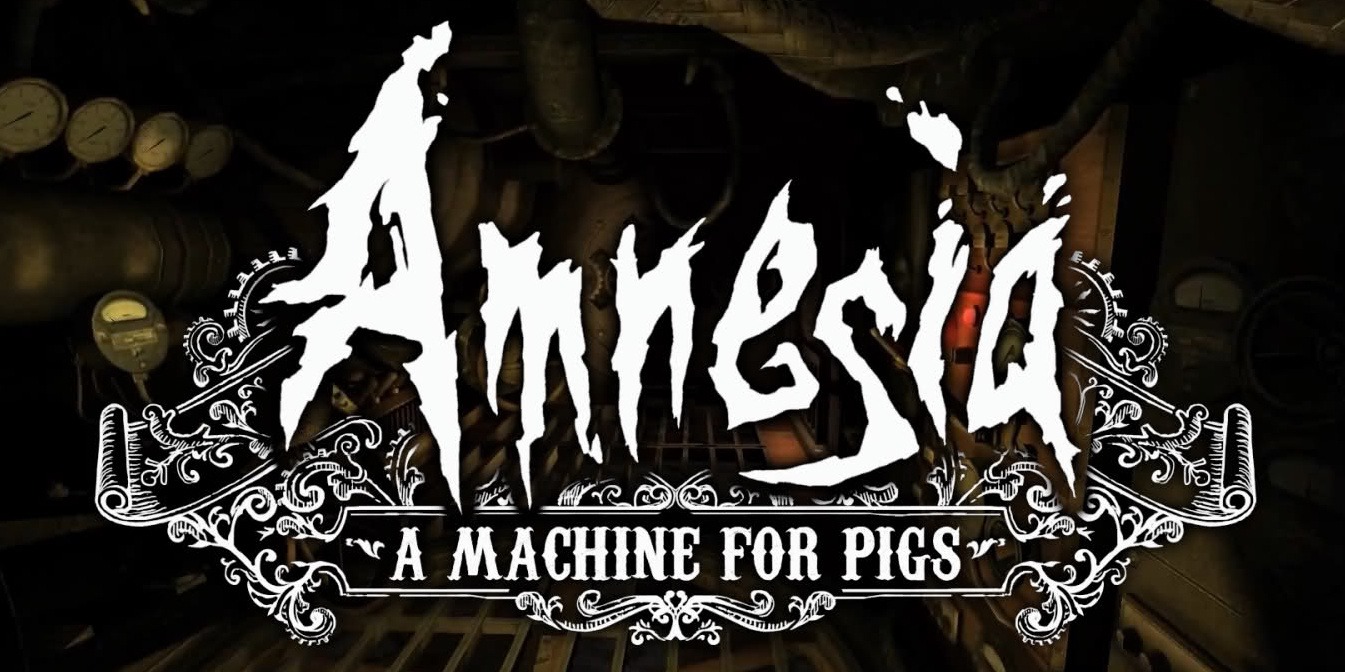
Amnesia: A Machine for Pigs
The Chinese Room
Amnesia: The Dark Descent was, for me at least, the survival horror game that ushered in the new wave of horror games that we’re currently riding on. Recent entries such as Alien: Isolation and SOMA gave players access to very limited—to zero, weapons with which to defend themselves, while games such as the Mero: Last Light or any games in of the Resident Evil series have, in my mind at least, revealed themselves to fall into what I call the “action horror” genre.
I call them action horror games because, although they do usually get the setup right and feature isolated and creepy environments to play within, there is just something not exactly spine-tingling about hunting down monsters with a big, bad, arsenal of weapons. What sets the more recent horror games apart is that not only do they nail the sense of being alone in unsettling environments, they also arm you the ability to run and hide, and that’s about it.
This engenders a true sense of dread since our natural human ability to protect ourselves is taken away. No more fight or flight; just flight (or more like run screaming in my case). In this case, not knowing what’s around the next dark corner or what that eerie wailing in the next room is, really carries a sense of dread, as opposed to saying to yourself: “Okay, whatever it is, I have my specially-crafted auto-reloading Shotgun of Power with handy chainsaw attachment, so I should be good,” and boldly sauntering ahead.

Amnesia: The Dark Descent is such a game. It took all of the usual conventions of survival horror and turned them on their head. So, when I found out that they’d made a follow-up, this one titled Amnesia: A Machine for Pigs, I was both titillated and apprehensive. After all, Dark Descent scared the bejesus out of me and I wasn’t exactly looking forward to revisiting that level of almost-crapped-my-pants fright again. After finally getting around playing A Machine for Pigs, while personally I’m happy to report that it was less horrific to play than its predecessor, from a more objective gameplay standpoint, it didn’t stack up quite as well.
A Machine for Pigs opens with its protagonist—if you can call him that, a well-off industrialist by the name of Oswald Mandus. He seems to have experienced a bump on the head (or maybe a real hard acid trip or something) because he wakes up without much of a memory. Oh yeah, and his children are also missing. Similar to Dark Descent, you begin the game in a sprawling enclave (in this case Mr. Mandus’ mansion) and he has to begin stumbling around, groggily searching for clues in order to trigger portions of his memory to return. Also following the original, the environments are suitably dark and creepy, and thunder and wind set an ominous tone as you try and piece together the mysterious storyline puzzles. But as you near the end of the game the rather heavy-handed clues make for a rather lackluster conclusion as you find out who Mandus really is and what his past actions have enabled.

British developer, The Chinese Room, does nail atmosphere however, which our friends across the pond are so adept at doing in British films. Each of the game’s locations are indeed creepy and unsettling, and make you want to get whatever clue you need from each area and quickly move on. This sense of desperation permeates the entire gaming experience and really keeps you on edge, which is amplified by an emerging sense of loss, and philosophical queries into the dark side of human nature.
While A Machine for Pigs delivered big time on atmosphere and storytelling, the actual scares are few and far between. One bizarre gameplay decision made is that they’ve done away completely with the sanity gauge, which I thought was one of the most ingenious game mechanics I’ve ever seen. This has been replaced by a sort of hint system where it is suggested that you don’t want to take too much damage by the game’s few creatures. One thing that I thought was utterly terrifying about Dark Descent was the way that the screen would twist and twirl when your character would stray too far away from light sources. It really translated the feeling that you were fighting for your characters very mental well-being, and created an additional layer of strategic depth to the proceedings.

And speaking of light, the series’ lighting mechanic has also been tampered with. Gone is the original’s inventory system, where you’d have to carefully manage items including a limited amount of oil and tinderboxes for lighting your lamp. In A Machine for Pigs, your lantern is apparently nuclear powered and never runs out of juice, meaning that you can just romp through the entire game with it on full blast without a care in the world. Similar to how the screen gets all static-laden the closer you get to danger, in their more recent offering, SOMA, here when something bad is around the corner your lamp will begin to flicker (but never fully go out).
This was kind of creepy the first couple of times it happened, but when I realized that it would never entirely go out and thrust you into darkness, it seemed like more of shallow gimmick than anything actually scary. I suppose the developers were trying to ratchet up the sense of tension and apprehension, but instead it broadcasts: “Something bad is up ahead!” and has the opposite effect. I’d rather get my money’s worth and leap out of my seat after having something nasty pop out of the darkness unexpectedly, than be bludgeoned over the head that it was coming up.

Graphics-wise, A Machine for Pigs doesn’t disappoint. Even though the game came out in 2012, it still holds its beautiful and atmospheric visuals well, and its dreary and depressing environs are just drenched in character. It especially looks good on a decent to high end gaming PC or gaming laptop. The background sounds are also handled well, and just as with Dark Descent, really pull you into the proceedings convincingly enough. My only minor quibble is that Mandus doesn’t exactly come off as a man necessarily concerned about his recently disappeared kids, and that sort of takes away from the overall sense of emersion.
Amnesia: A Machine for Pigs is a worthy entry into the Amnesia series, although its strange absence of inventory and lighting systems somewhat take away from the oppressive afraid of the dark atmosphere of the original. The lack of dangerous entities to be encountered, and general lowering of challenge level, puzzle-wise, may mean that A Machine for Pigs doesn’t quite stack up to Dark Descent, but it is still a haunting and sometimes mesmerizing gaming experience that aficionados of the survival horror genre won’t want to miss out on.

SCORE: 80%
Kane’s Conclusion:
Get creeped out to the max by pumping up those graphics settings up to the max, by investing in a new gaming PC today:

Visit CyberpowerPC’s website to check out all of the other great deals as well!